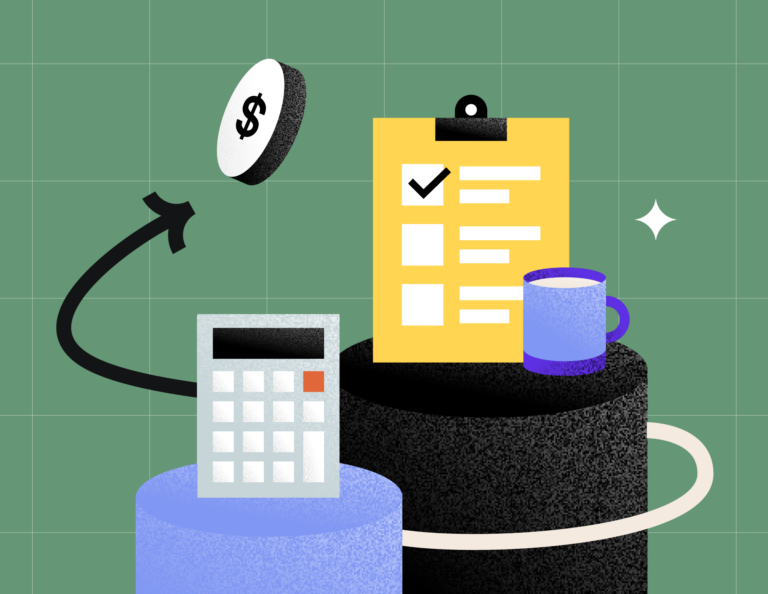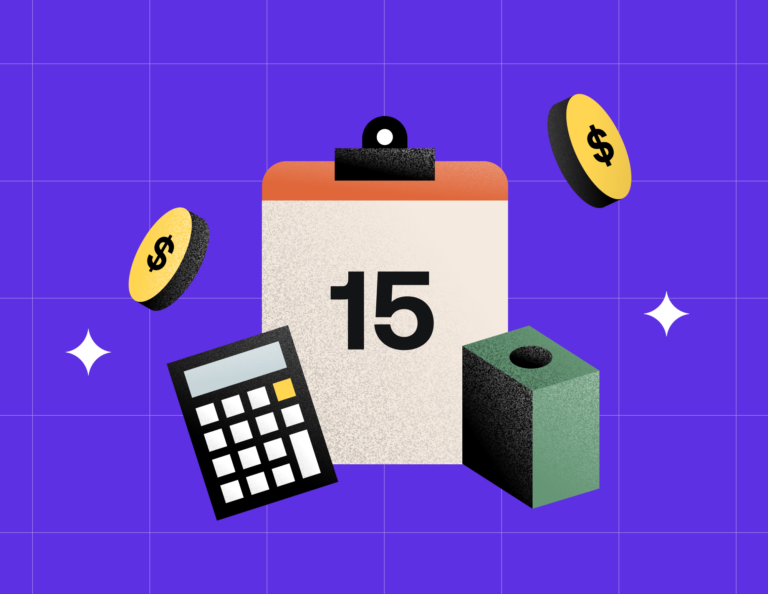Learn how to prevent chargebacks and keep your business protected in the long term. Plus, start implementing these tips to avoid fraudulent transactions and customer disputes.

As an independent business owner, it’s not uncommon to encounter payment disputes. Miscommunications with customers, cancellations, and even clients attempting to receive services free of charge can all lead to unwanted chargebacks.
The best way to prevent chargebacks is by using a payment processor that can protect you from disputes. Fortunately, HoneyBook has the opportunity to aid you in the dispute resolution process and can help take action on your behalf.
As a Disputes Specialist here at HoneyBook, I help our members work through all sorts of disputes every day. From simple misunderstandings to clients-gone-rogue, here are some tips I’ve picked up along the way that we pass on to HoneyBook members when they receive customer disputes, and best practices to help mitigate them.
Jump to:
- Understanding different types of chargeback disputes
- Protecting your business against chargebacks
- What happens in the chargeback process?
- What might put you at risk of chargebacks
- How does HoneyBook handle disputes?
- Set expectations upfront to prevent chargebacks
Understanding different types of chargeback disputes
Clients can dispute credit card purchases or payments made via ACH bank transfer through HoneyBook. When filing disputes, the cardholder’s bank will ask them to choose a reason for the dispute, which can be any of the following:
- Credit not processed
- Duplicate charge
- Fraudulent charge
- Product/service not received
- Product/service unacceptable
- Subscription canceled
- Unrecognized charge
- Debit not authorized
Credit card disputes
Card disputes are the most common type of dispute. They occur when a cardholder initiates a dispute on a payment made through their credit or debit card. As the merchant, you have the opportunity to respond to credit card disputes if you believe they were incorrectly filed, which is where HoneyBook steps in to help—but more on that later.
Bank transfer disputes
Bank transfer disputes are a bit different. They occur when a bank account holder initiates a dispute on a payment they made via ACH bank transfer. Unfortunately, issuing banks do not allow the option for merchants to fight chargebacks associated with ACH transfers, and they are counted as an automatic loss. While rare, bank transfer disputes do still happen.
Related Post
How does payment processing work?
Protecting your business against chargebacks
Although disputes can happen to any business owner, there are steps you can take to avoid them altogether and deal with them quickly. Use these nine strategies before you start projects and as you’re accepting payments to protect your business and your time.
1. Evaluate and establish trust with your client
Before you begin a project, it’s important to get to know your client. By incorporating trust building into your onboarding process, you’ll establish why you’re a great fit for their needs. Increasing trust between you and your client can be beneficial when it comes time to collect payment. Your client will humanize you, feel that they’re on the same page as you, and by extension, want to pay you promptly.
Meeting your potential clients in person (or virtually) to conduct a consultation call is one way to vet client legitimacy. While you’re evaluating their fit for your business, consider if they’ve worked with other independent businesses and have the budget to move forward.
2. Determine who will be making payments
Before your client books, find out who will be making payments before you send your first invoice. One common cause of disputes is “friendly fraud;” when a friend or relative of your client makes a payment on their behalf (or your client uses someone else’s card to make their payment).
Pro tip
Friendly Fraud: When someone else pays for services on behalf of someone, then issues a dispute if they forget about the charge or don’t recognize it on their statement.
When this happens, the cardholder might not recognize the charge on their statement or forget what the charge is for. This can lead to the cardholder initiating a dispute for payment toward your services. Before you accept payments, avoid miscommunication and make sure you’re both aligned on where the payments will come from.
3. Maintain a solid line of communication with your client
It’s imperative to keep a paper trail of your work and communication with your client. In the event of a dispute, messages are a strong source of evidence, whether it’s an email or text message. These messages are documentation that shows you and your client have kept a close line of communication throughout your working relationship.
When banks review disputes, they’ll look for indications that the cardholder (your client) connected with the merchant (you) regarding the charge. If you have that evidence, it will validate that the charge is legitimate and increase the chances of resolving the dispute in your favor. Always ensure you’re following up with emails, recording virtual meetings, keeping text messages, and establishing timelines to keep track of work.
4. Make sure your client knows what to expect on their credit card statement
Before your client makes their first payment, make sure they know what your business name will look like on their credit card statement. This is important since it might show up in an abbreviated way, and they may not recognize it. If your client mistakes your business for fraud, it could lead to “friendly fraud,” where they mistakenly file a dispute.
While HoneyBook always includes your full business name in statement descriptors for payments, oftentimes credit card companies will abbreviate or shorten your business name on the statement. It could end up showing fewer characters than it actually is, especially if your client views their statement on mobile. A great precaution would be to inform your client or the cardholder that your business name may appear shortened or abbreviated on their statement.
5. Document proof of services
Your proof of services could serve as vital evidence to fight back against disputes if they happen, so be sure to create a visual log of the work you provide. Some examples of documentation might include:
- Photos at your event
- Screen grabs of the online services provided (website design, coaching)
- Client satisfaction questionnaires and answers
- Screenshots of communication with your client about your services
All of this documentation and evidence can help reinforce you delivered your services, and in the case of a dispute, demonstrate to the bank that you’ve followed through.
If you are shipping a physical product to your client, organize tracking on the item to ensure a record of its delivery. Specifically, if you register for tracking on products sent through the mail, you can mitigate “product not received” disputes. If a client claims a product is lost, you’ll be able to use the tracking history to help challenge their dispute.
6. Send strong, legally binding contracts through HoneyBook
Always send a contract through your HoneyBook project. This is one of the most important sources of evidence banks look for when they review disputes. Contracts show banks that your client is legally obliged to make payment(s) to you for your services, and it can often render any disputes inapplicable.

Use HoneyBook’s ironclad contract templates to protect your business and clients.
7. Review your contracts and receive verbal agreement
Oftentimes, it’s not enough to just send your client a contract and wait for them to sign. Your client might just skim through and miss important sections and clauses. Perhaps you’ll be charging them a retainer fee, and they missed that in the contract and invoice. Instead, you want to make sure to avoid any excuses your client might make about not reading your agreement.
As another tip, sending your contracts through HoneyBook can ensure that you require clients to look over the most important parts of your agreement. You can include fields where clients are required to initial so that they can’t move forward without doing so. This helps point them to the specific portions you want to highlight around payments, which can help prevent disputes in the future.
8. Include a cancellation/and or dispute clause in your contracts
While a cancellation or dispute clause in your contract cannot prevent clients from filing disputes, it may deter your client from initiating them. Including a clause will make your terms clear on what to expect in the event of a cancellation.
Cancellation clauses can help outline and reinforce your terms for refunds if a service or event is canceled. You can also set expectations for your clients that you will challenge disputes if they decide to dispute a non-refundable payment.
9. If a client cancels, be sure to expire their files
This is a recommended step for HoneyBook members, especially if your client agreed to auto-pay or was on a recurring payment plan while you were working together. If they choose to cancel, they could still get charged for the next payment automatically unless you expire their project in HoneyBook. This can lead to unnecessary disputes if payment processes for services they’re no longer expecting.
What happens in the chargeback process?
The chargeback process typically follows these steps:
- Filing: The chargeback process starts when a customer contacts their credit card company or financial institution to dispute a transaction. They may do this for any number of reasons. For example, if they were unaware of the transaction, it would be a fraud-based chargeback. They may also file a chargeback if they knew of the transaction but didn’t believe they received a fair outcome.
- Investigation: Once the customer files a chargeback with their financial institution, the financial institution begins the investigation process. This process determines whether the customer should receive a refund or the business is entitled to the money collected.
- Notice: As part of the chargeback process, the financial institution will notify the merchant the chargeback was filed. In some cases, your merchant account may hold the money involved in the chargeback. There also may be fees that you, as the merchant, will need to pay to cover the investigation.
- Evidence: Once you receive notice of a chargeback, you’ll need to provide evidence that the transaction was legitimate. This may include signed receipts, proof of the delivery of the product or service purchased, or other evidence. Be sure to provide all information and documentation possible for the best chance of winning the dispute.
- Review: The financial institution will review the chargeback complaint and the evidence you provide to determine where the money should go.
- The decision: Once they’ve had the opportunity to review all of the evidence, the financial institution will decide who they believe should receive the funds from the transaction. If you win the dispute, the institution will release your funds. If not, the customer will receive a refund.
- Potential appeals: In some cases, consumers may be able to appeal chargeback decisions, which could lead to a need to provide further evidence and potential reversals of transactions.
What might put you at risk of chargebacks?
Several factors may put you at risk of chargebacks. Some of the most pressing include:
- No identity verification: It’s up to the merchant to verify the identity of their customers when accepting credit cards. You can do so by ensuring that your customer’s ID matches the name on the credit card.
- A vague description of products or services: Chargebacks often happen when consumers feel they didn’t get what they paid for. That issue can arise if you don’t thoroughly explain your product or service. Be sure to provide an in-depth description of what consumers are purchasing before accepting payment.
- Inadequate contracts: A solid contract helps the buyer understand what they’re purchasing and protects you in the event of a chargeback. Ensure you have a firm, legally binding contract for the services you provide to clients.
- Misleading advertising: Since clients may charge back transactions if they don’t feel they got what they paid for, your advertisements mustn’t embellish your services. Make sure any advertisements you participate in clearly and accurately depict the product or service you sell.
- Lack of communication: If there is any length of time between the charge and the service provided, staying in communication with your clients is essential. A lack of communication may lead them to believe they won’t get what they purchased, leading to potential chargebacks.
How does HoneyBook handle disputes?
HoneyBook is here to help you with any and all disputes you may encounter. If you receive a dispute, we will send you an email notification and a Dispute Specialist will be in contact with you via phone typically within the same day. We’ll communicate with you to understand what may be going on with your customer and walk you through the next steps.
If you choose to contest the dispute, we’ll guide you through the process of collecting evidence and even craft and submit a response to the bank on your behalf. As your partner, we want to allow you to leverage our years of experience fighting disputes and help increase the chances of winning your case. We’ll be sure to keep you closely updated on your case and let you know as soon as there’s a resolution.
HoneyBook also works with external partners and processors to deploy many layers of fraud protection for you in our payments system. This includes CVV checks, payment authentication, and cardholder identity checks to ensure that your payments are processed safely.While we cannot stop your clients from filing disputes (this is an action taken independently with their credit card company, and is a risk when processing any sort of payment online), we do have checks in place to ensure we catch anything that doesn’t look quite right.
Set expectations upfront to prevent chargebacks
As a final recommendation, we strongly encourage you to send your clients contracts within your projects, whenever possible. Specifically, include cancellation or dispute clauses up front can help set expectations with your clients. In the case of a dispute, it’ll also strengthen your response to the bank. Initialed or signed clauses like these can help the bank understand that your customer is liable for making the payment to you.
We all hope that every project will go smoothly, but it just isn’t always the case. The best thing you can do is communicate with your clients effectively from start to finish. Set expectations and continue to remind them about your policies, so you can focus on your best work.
Protect your business with HoneyBook
HoneyBook offers contracts, secure payment processing, and 1:1 support for payment disputes. See how HoneyBook can protect your business!
Disclaimer: The advice featured in this blog post was sourced from our HoneyBook Disputes Specialists for sharing general information and knowledge. For specific financial or legal information and advice, please consult an authorized professional.




